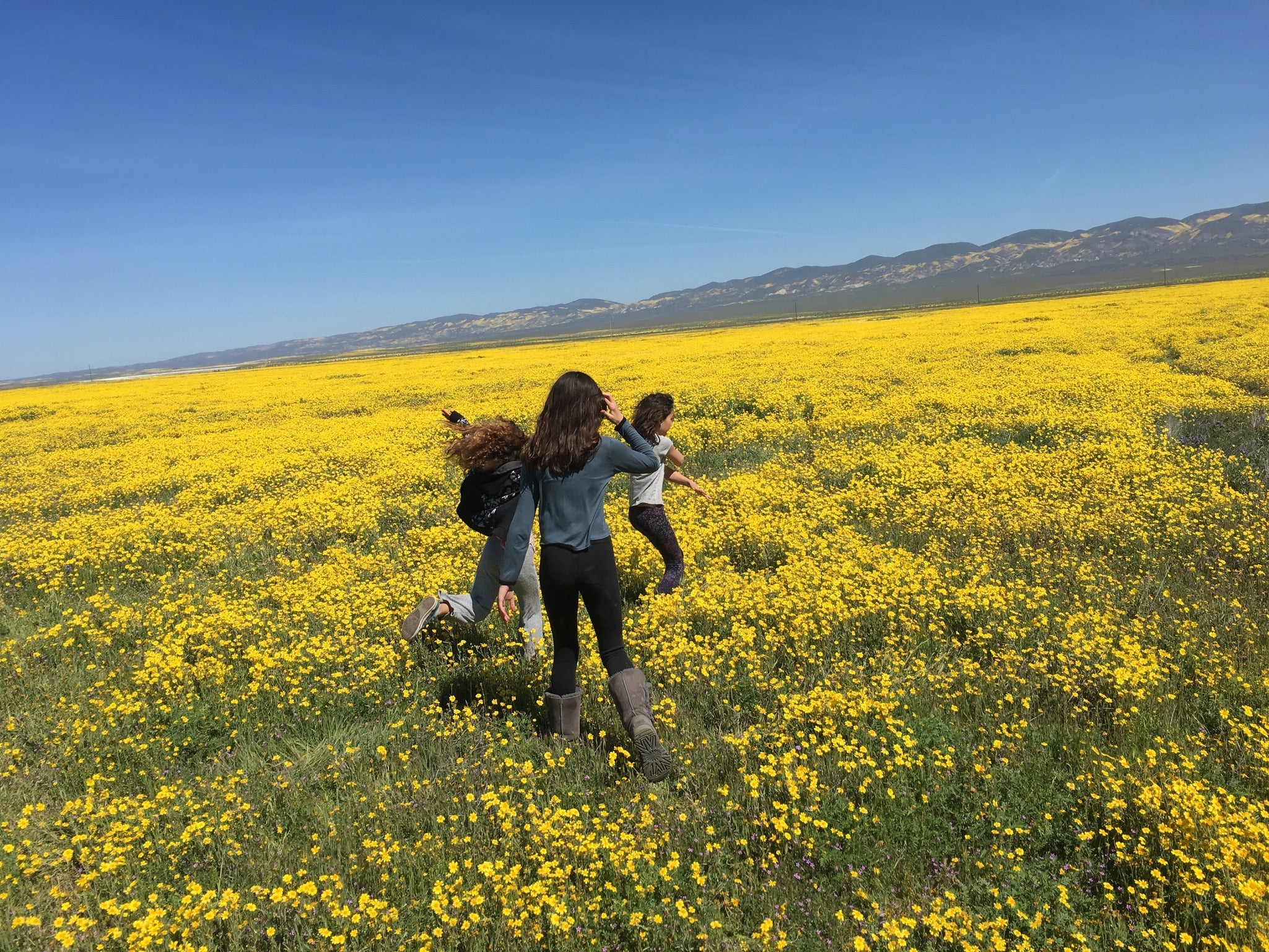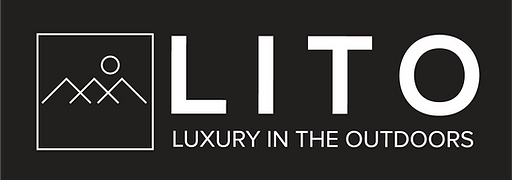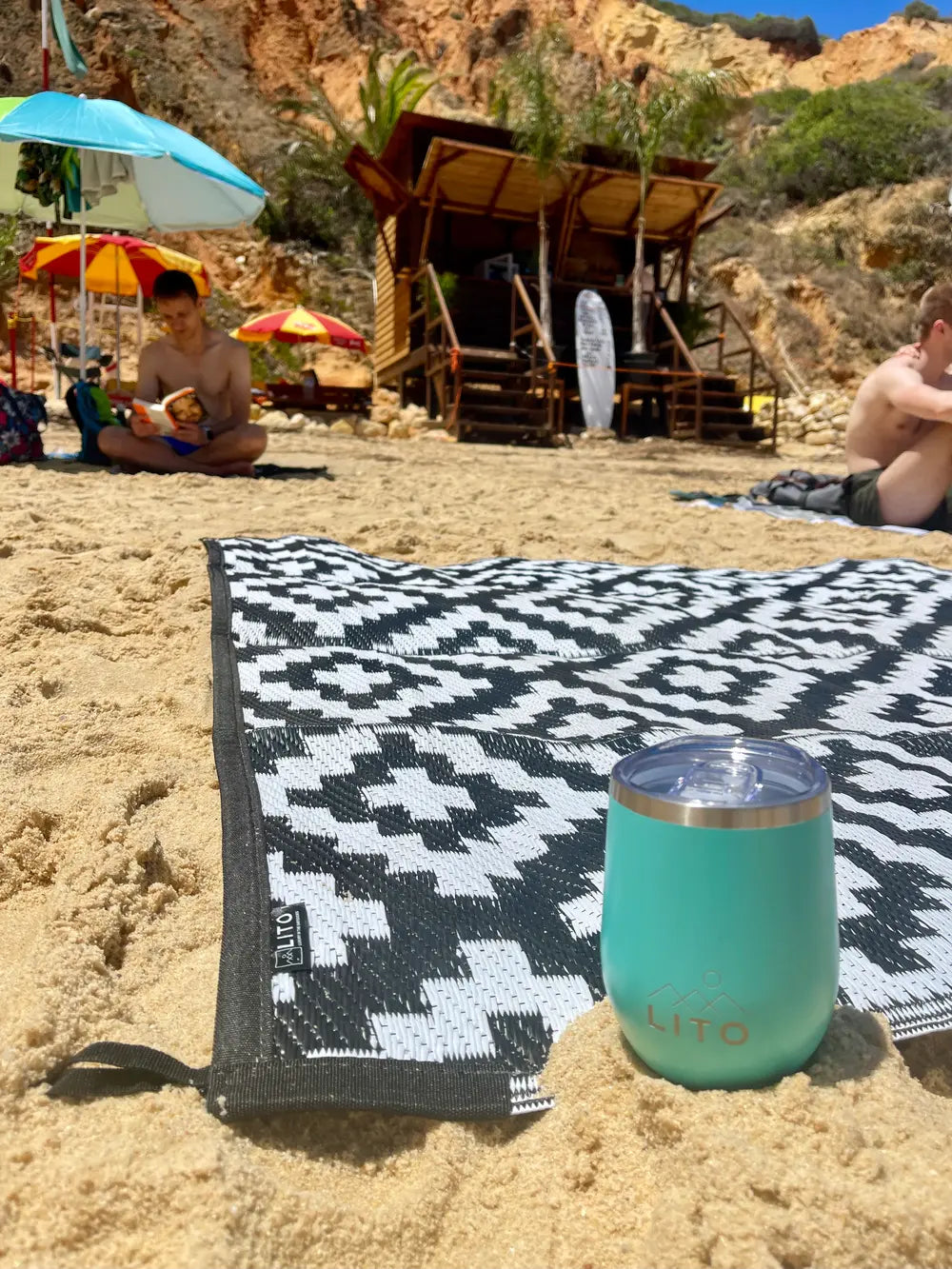
A Complete Guide to Dry Camping
Written By: Carol Carimi Acutt

Photo courtesy of Robin Acutt. These are the spots you can find when you're dry camping. This is the 2019 Super Bloom near Carrizo Plain National Monument
Many of us have been camping, but what exactly is dry camping? It strips camping down to the bare essentials, so you can unplug and reconnect with nature in a whole new way. There is no electricity, running water or bathrooms, basically there aren’t any hookups. But that doesn’t mean you can’t bring your car or RV. Traditional camping often means a pre-selected campsite with amenities, while dry camping is more about finding your own spot, with campsite selection being a crucial skill.
In this guide, you'll learn everything you need to know about dry camping. We've got tips to help you make the most of your experience as well as a list of the essential gear you'll need for dry camping. We also have a fantastic packing list for your RV. We'll even share some of the best places to go dry camping.

In a nutshell:
- Dry camping offers a rugged and authentic outdoor experience that requires careful preparation.
- Respecting nature and observing camping etiquette are important aspects of dry camping.
- Safety and preparedness, including fire safety, navigation skills, and communication devices, are critical in dry camping.
- Water usage conservation, energy use and waste management are necessary when dry camping.

The Difference Between Dry Camping and Traditional Camping
The beauty of dry camping is the independence it offers, there’s nothing better than getting out into the outdoors in the quiet; away from traffic, noise from other campers and light pollution. There are three crucial aspects that need your attention: water usage, power usage, and waste management. If you conserve your resources wisely, you won’t be left high and dry in the middle of nowhere.
Essential Tools, Equipment & Emergency Preparation:
Equipping yourself with the right tools and gear isn't just a luxury—it's a necessity when venturing into the wild for an off-grid experience. When you're out there in the wilderness, you'll quickly learn the true meaning of self-sufficiency. There is freedom in embracing the minimalist lifestyle while living off-grid.
Vehicle choice is key, as it will be your base during your dry camping journey. Make sure it suits your needs and is capable of handling the terrain. Clothing should be practical and weather-appropriate - make sure you have warm clothes for the evening even in the summer months.
Familiarize yourself with local regulations to respect the environment and avoid fines. Above all, remember that dry camping is about enjoying nature and celebrating your own self-sufficiency.
Here are some tips:
- Use a good map or GPS when selecting a camping spot. Be sure to have a paper map because cell phone service isn’t reliable, especially when you are off the grid.
- Before you head to your spot, make sure you have a full tank of gas.
- Bring a well-equipped first aid kit including allergy medicine like Benadyl in case of an unexpected allergic reaction to a bug bite.
- Use fire safety precautions. Make sure you are not in an area that is dry or has a fire danger warning and follow all guidelines of the area. If you are on BLM land, the website provides rules for each area. If campfires are permitted, it’s best to use a portable fire pit that does not sit on the ground and make sure you put the fire out completely before you go to bed.
- Check the weather and make sure you are not in a flash flood zone. Do not go off-grid if you will be in extreme heat or cold.
- Bring an emergency radio for communication in case your cell phone doesn’t work.
- Make sure you have a spare tire and the proper tools to change a tire.
- Choose a camping spot that is on a road that your vehicle can safely traverse.
- Have an evacuation plan and know the different routes.
- Signal flares are an essential supply, as they can draw attention to your location in case of an emergency.
- Bring bear-proofing supplies to protect your campsite from wildlife.
- Bring an outdoor water filter in case you need to collect water from nearby rivers, streams or lakes. This is one place where you don’t want to skimp on costs. Do your research and buy the best quality water filter you can find. We like the Life Straw but there are many brands that are excellent. Additionally, we recommend the following in some cases:
- Harvest Rainwater: Collect rainwater in reusable water bottles or hydration packs.
- Invest in Filtration Systems: Portable showers, UV sterilization, and water purification tablets ensure you're using clean water.
- Trust but Verify Natural Water Sources: Do your research regarding nearby water sources and always use a good quality water filter.

Setting up Camp
Find a spot that your vehicle can easily get to. Make sure you are in an area where camping is allowed and research the area regarding weather conditions, wildlife and land rules. Once you find the perfect spot, set up camp. Make your campsite comfortable with a table, chairs, a waterproof tablecloth, a shade structure, an outdoor camping rug and solar powered lights. We also like to string our lights with a rope between trees to create elegant ambiance. It’s also nice to hang a hammock or two.
Water Usage
Water conservation strategies will enable you to have enough water until the end of your trip. Bring at minimum, 2 gallons of drinking water per person per day for drinking, cooking and washing either in bottles or in your fresh water RV tank. We always recommend extra water, especially if you are in a desert.
In order to conserve water, take shorter showers or skip a few and never let the RV tap run while you are brushing your teeth or washing dishes. Use paper plates so you don’t have to wash them. If you plan to be in one spot for several days to a week and feel you might be short on water, a spray bottle is a great way to use very little water to wet dirty dishes and rinse them.
Another strategy is to reuse water whenever possible. We like to put a bowl in the RV sink to collect gray water. This prevents the gray water tank from filling up too fast and this water can be used to flush the RV toilet or use it to wet dirty dishes. After rinsing the dishes with the gray water, scrub and rinse them with fresh water.
Power Usage:
If you are traveling in your RV, use a solar panel to charge your battery during the day. If your RV doesn’t come with an inverter, installing one allows your battery to supply electrical power to your outlets. Portable solar generators or traditional generators are also great options. Keep lights and all non-essential power sucking appliances off during the day and bring portable batteries to charge your cell phone. One of our favorite brands is the Anker solar portable battery.
Waste Management:
Calculate how many days you will be off grid and how many flushes you will need per person per day before your black tank fills up. Pre-map where dump stations are located so you know where to go after you leave your off grid site.
If you don’t have an RV and need to go “in the woods, use conservation etiquette. Pick a spot 200 feet away from any water source or walking trail, dig a hole at least 4 inches deep and then bury your business. Make sure you avoid poison ivy and know what it looks like. Pack away toilet paper in a zip lock back and put it in your trash that you will dispose of after you leave the spot. NEVER dump your black or gray tank off the grid. Always dump your tanks at the closest dump station you can find.

General Conservation Guidelines:
When you are in nature, be sure to honor it by treating it with respect.
- Leave No Trace - once you leave a place, no one should know that you were there. Leave it exactly as you found it (or leave it better if you find someone else’s trash, pick it up and dispose of it properly).
- Avoid trampling plants and vegetation.
- Don’t disturb wildlife and keep a healthy distance from animals who live in the area.
- Don’t feed wildlife, no matter what.
Cooking and Food Storage
When you're planning your dry camping trip, it's crucial to consider your meals. Plan every meal and how you will store the food safely for the amount of time you will be off-grid. Bring extra non-perishable items like nuts, instant noodles and soups, dried fruit, dried meat and canned food, etc. Make sure you have enough fuel to power your grill or stove during your stay. Lastly, be creative and cook some of your best meals. Nothing tastes better than eating your favorite food under the stars. Bring a folding table and chairs so you can enjoy your meals outside. And of course don’t forget a camping tablecloth that is wipeable and waterproof.
What are the Benefits of Dry Camping?
Dry camping is an excellent way to get closer to nature, discover your self-sufficiency, and save some money along the way by avoiding campsite fees. When you are off the grid, it's quiet! There is no traffic noise or light pollution. The stars are bright and beautiful, so make sure you take some time to stare at the stars. In the morning, you may hear birds chirping and wildlife stirring. It’s a wonderful time to reconnect with nature and do some forest bathing which is also good for your health. Forest bathing is when you mindfully take in the quiet, taking time to appreciate the beauty and wildlife surrounding you. These moments are great for anyone’s nervous system and helps induce relaxation.
Our favorite things to do when dry camping are:
- Star gazing
- Hiking and walking
- Outdoor cooking
- Fishing
- Wildlife photography
- Foraging (only if you know exactly what is safe to collect)

Can I bring pets while dry camping and what precautions should I take?
Yes, you can bring your pets, just be mindful of keeping your pet safe and away from wildlife. It’s easy to overlook, but be sure to pack a first aid kit for your pet too. And of course bring your pet’s favorite food, treats, toys, bed and leash. We encourage all pet wonderers to use light-up leash and collar which is especially handy when camping off-grid. It can be very dark at night and it's always good to be able to see your pet at night with a light-up leash and the lights help you avoid tripping over the leash

Where to Dry Camp?
Now that you are prepared, where should you go? We love going to national parks, state parks and BLM (Bureau of Land Management) land. BLM has wonderful untouched wilderness regions where people are allowed to camp. The website also has great information and maps of the areas. BLM campsite selection can be a thrilling experience, with various landscapes to choose from. Remember, permit requirements vary, so do your research beforehand to avoid surprises. Keep fire regulations in mind when setting up camp to ensure both your safety and the preservation of the environment. Be mindful of seasonal closures, and use BLM land etiquette to maintain these precious spaces for future explorers.
If you're yearning for a taste of the wild, there's no better place to dry camp than in America's breathtaking National Parks and state parks. With seasonal accessibility, you can plan your trip according to the parks' best times, ensuring an unforgettable experience. Backcountry camping is readily available at all national parks with a permit and some of them allow boondocking as well or offer dry campsites.
Lastly, you can find dry camping spots with Harvest Hosts, a fantastic membership for those who love to camp.
Happy Camping!


